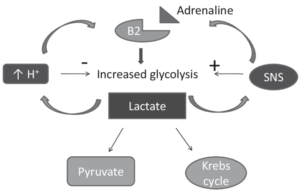Eclampsia IBCCETY is a serious medical condition that poses significant risks to pregnant women and their unborn children. This article aims to provide a detailed overview of eclampsia, its causes, symptoms, diagnosis, treatment options, and prevention strategies. With this information, readers can gain a better understanding of this condition, enhancing awareness and preparedness.
What is Eclampsia?
Eclampsia is a severe complication of pregnancy characterized by the occurrence of seizures in a woman who has been diagnosed with preeclampsia. Preeclampsia itself is a condition marked by high blood pressure and damage to organs, usually the kidneys and liver, occurring after the 20th week of pregnancy. Eclampsia represents the progression of preeclampsia and can lead to serious health risks for both the mother and the baby.
Understanding IBCCETY
The term “IBCCETY” refers to a collaborative effort in medical education and research, focusing on maternal and fetal health. It is essential to contextualize eclampsia within the broader spectrum of maternal health initiatives aimed at reducing risks and improving outcomes during pregnancy. The IBCCETY initiative promotes best practices in the management of conditions like eclampsia through education and research.
The Causes of Eclampsia
Eclampsia primarily arises from complications related to preeclampsia, although the exact cause remains unclear. Here are some of the key factors associated with the development of eclampsia:
1. High Blood Pressure
Chronic hypertension or high blood pressure that develops during pregnancy can increase the risk of preeclampsia and, consequently, eclampsia. Regular monitoring of blood pressure is vital for pregnant women, especially those with a history of hypertension.
2. Placental Issues
Problems with the placenta, such as inadequate blood flow, can contribute to the onset of preeclampsia. The placenta is crucial for supplying nutrients and oxygen to the fetus, and any dysfunction can lead to serious complications.
3. Genetic Factors
A family history of preeclampsia or eclampsia may predispose women to these conditions. Genetic predispositions can affect blood vessel function and response to pregnancy-related changes.
4. Obesity
Women who are overweight or obese are at a higher risk of developing gestational hypertension and preeclampsia. Maintaining a healthy weight before and during pregnancy can help mitigate these risks.
5. Multiple Pregnancies
Carrying more than one fetus (such as twins or triplets) can increase the likelihood of developing preeclampsia due to the increased demand on the mother’s body.
6. Age Factors
Women who are either very young (under 20) or older (over 35) are at a higher risk of experiencing preeclampsia and eclampsia. Age can influence various factors, including health conditions and pregnancy complications.
7. Chronic Conditions
Certain pre-existing medical conditions, such as diabetes, kidney disease, and autoimmune disorders, can increase the risk of developing eclampsia. Managing these conditions effectively before and during pregnancy is essential.
Symptoms of Eclampsia
Recognizing the symptoms of eclampsia is crucial for timely intervention. The most common signs and symptoms include:
1. Seizures
The hallmark symptom of eclampsia is the occurrence of seizures. These may present as generalized shaking or convulsions. Seizures can be a one-time event or recur, necessitating immediate medical attention.
2. Severe Headaches
Women experiencing severe, persistent headaches may be exhibiting early signs of preeclampsia, which can progress to eclampsia if not addressed.
3. Vision Changes
Blurred vision, seeing spots or flashes of light, and temporary loss of vision are common visual disturbances associated with eclampsia.
4. Swelling
Swelling in the hands, feet, and face can indicate fluid retention related to preeclampsia and eclampsia.
5. Nausea and Vomiting
Women with eclampsia may experience nausea and vomiting, often accompanied by abdominal pain.
6. Confusion or Altered Consciousness
Altered mental status, confusion, or loss of consciousness can occur, especially during or after a seizure.
7. Shortness of Breath
Some women may experience shortness of breath or difficulty breathing due to fluid accumulation in the lungs.
Diagnosis of Eclampsia
Timely diagnosis is essential for managing eclampsia effectively. Healthcare providers utilize various methods to diagnose the condition:
1. Medical History Review
A thorough review of the woman’s medical history, including any previous pregnancies and existing health conditions, is essential.
2. Physical Examination
A physical examination helps assess blood pressure, swelling, and neurological function. It may also include checking reflexes and signs of other complications.
3. Blood Tests
Laboratory tests are performed to evaluate kidney function, liver enzymes, and platelet levels. These tests help determine the severity of preeclampsia and the risk of progression to eclampsia.
4. Urine Tests
A urine sample is tested for proteinuria, which is the presence of excess protein in the urine, a key indicator of preeclampsia.
5. Ultrasound
An ultrasound may be conducted to monitor the baby’s growth and assess placental function. This imaging can provide valuable information about the fetus’s health.
6. Monitoring Symptoms
Healthcare providers will closely monitor any signs of seizures, severe headaches, or changes in mental status.
Treatment of Eclampsia
Immediate and effective treatment of eclampsia is critical to prevent complications. The main goals of treatment include controlling seizures, managing blood pressure, and delivering the baby if necessary. Here are the primary treatment options:
1. Seizure Management
The first priority in treating eclampsia is to stop seizures. This is typically done with medications such as magnesium sulfate, which is administered intravenously. Magnesium sulfate is effective in controlling seizures and preventing further episodes.
2. Blood Pressure Control
Antihypertensive medications may be prescribed to manage high blood pressure and reduce the risk of complications. Commonly used medications include labetalol, hydralazine, and nifedipine.
3. Fetal Monitoring
Continuous monitoring of the fetal heart rate and overall well-being is crucial. If the baby is in distress or if the mother’s condition worsens, early delivery may be necessary.
4. Delivery of the Baby
In many cases of eclampsia, the safest option for both the mother and the baby is to deliver the baby as soon as possible, especially if the pregnancy is at or near term. The mode of delivery (vaginal or cesarean) will depend on the individual situation.
5. Postpartum Care
After delivery, the mother will continue to receive monitoring and treatment to manage blood pressure and prevent future complications. The risk of developing eclampsia decreases significantly after childbirth, but some women may experience complications that require ongoing care.
Complications of Eclampsia
Eclampsia can lead to serious complications if not managed promptly. Here are some of the potential complications:
1. Maternal Risks
- Stroke: High blood pressure and seizures can increase the risk of stroke during pregnancy and postpartum.
- Kidney Damage: Severe preeclampsia and eclampsia can cause kidney damage or failure.
- Liver Damage: Elevated liver enzymes may indicate liver damage, which can have severe implications.
- Placental Abruption: This is a condition where the placenta detaches from the uterus before delivery, leading to severe bleeding and complications.
2. Fetal Risks
- Preterm Birth: The need for early delivery due to maternal complications can result in preterm birth, which carries its own set of risks.
- Low Birth Weight: Babies born to mothers with eclampsia may have low birth weight due to inadequate blood flow and nutrients from the placenta.
- Stillbirth: In severe cases, eclampsia can increase the risk of stillbirth.
Preventing Eclampsia
While it may not be possible to prevent eclampsia entirely, certain strategies can help reduce the risk. Here are some key preventive measures:
1. Regular Prenatal Care
Regular check-ups during pregnancy are essential for monitoring blood pressure, urine protein levels, and overall health. Early detection of preeclampsia can prevent progression to eclampsia.
2. Healthy Lifestyle Choices
Maintaining a healthy lifestyle, including a balanced diet, regular exercise, and avoiding tobacco and excessive alcohol, can help reduce the risk of developing hypertension during pregnancy.
3. Weight Management
Achieving a healthy weight before pregnancy can lower the risk of developing gestational hypertension and preeclampsia.
4. Managing Pre-existing Conditions
Proper management of chronic conditions such as diabetes, hypertension, and autoimmune diseases is crucial for reducing risks during pregnancy.
5. Educating About Symptoms
Educating pregnant women and their families about the symptoms of preeclampsia and eclampsia can empower them to seek timely medical attention.
6. Medication for High-risk Women
In some cases, healthcare providers may recommend low-dose aspirin or other medications for women at high risk of developing preeclampsia. This is typically done after discussing the potential benefits and risks.
Conclusion
Eclampsia IBCCETY is a serious complication of pregnancy that requires prompt













